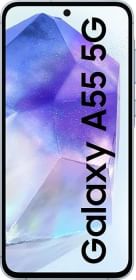We have now proceeded to the fifth generation of DRAM technology on phones – LPDDR5. Apart from phones, LPDDR5 will also find applications in cloud computing, autonomous cars, and AR systems.
Mobile computing has become increasingly demanding and factors like industry switch to high-resolution content, high refresh rate screens, increased reliance on AI for mobile applications, and the transition to 5G connectivity further warrant the need for a faster and better memory. Also, RAM is quite easy to market on mobile devices and OEMs are under constant pressure to innovate.
So, how much of an impact with the LPDDR5 have on your mobile experience? Let’s answer all LPDDR5-related questions while comparing it with the still prominent LPDDR4x and LPDDR4 RAMs.
Contents:
- What is LPDDR5 RAM?
- List of phones with LPDDR5 RAM
- LPDDR4 vs LPDDR5 – Power efficiency
- Lpddr5 vs Lpddr4 – Data Rate Improvements
- How LPDDR5 Achieve Improved Speed
- LPDDR5 RAM supported Chipsets
What is LPDDR5? How does it improve over LPDDR4x or LPDDR4?
LPDDR5 breaks down to the fifth generation of Low Power Double Data Rate technology. The standard was defined by JEDEC in February 2019, which was months after Samsung had already announced its work on LPDDR5 memory.
LPDDR5 succeeds LPDDR4x which is also a power-efficient RAM supported by most available chipsets and that can now be had even on affordable phones. The LPDDR5, however, is still expensive technology and is available only across flagship phones in 2020.

so, who are leading LPDDR5 Manufacturers?
Samsung is mass-producing 12GB LPDDR5 RAM using the second-generation 10nm process which has been used in various smartphones in past few years. Samsung has been offering 16GB LPDDR5x memory to various OEMs in 2024.
Apart from Samsung, Micron has started shipping LPDDR5 RAM in 6GB, 8GB, 12GB, and 16GB configurations. Xiaomi’s Mi 10 was the first phone to employ Micron’s LPDDR5 and many more Chinese players have since sourced Micron’s memory for their respective flagships.
Also Read: UFS 3.1 vs UFS 3.0 Comparison: What’s New and Different?
List of phones with LPDDR5 RAM available in 2024
- Samsung Galaxy S24 Ultra (review)
- Samsung Galaxy Z Fold5 (review)
- Samsung Galaxy S23 Ultra (review)
- Samsung Galaxy S3 Plus (review)
- Samsung Galaxy Note 20 Ultra 5G(review)
- Galaxy Z Fold 2 5G
- Samsung Galaxy S20 (review)
- Samsung Galaxy S20+
- Samsung Galaxy S20 Ultra (review)
- Samsung Galaxy Flip
- Xiaomi Mi 10 Pro and Mi 10
- iQOO 3 (review)
- iQOO 12 (review)
- Realme X50 Pro (review)
- Redmi K30 Pro
- OnePlus 8 Pro
- Royale Flexpai 2
- OnePlus 11R (review)
- OnePlus 12 (review)
- Asus ROG Phone 7
- OnePlus 11 5G
- Vivo X90 Pro+ (review)
LPDDR4 vs LPDDR5: Power efficiency
Over the last few years, LPDDR RAM evolution’s prime focus has been reducing power consumption. That is not to say that the data rate hasn’t improved with every successive generation.
While moving from LPDDR4 to LPDDR4x, the output VDDQ voltage – that is needed to drive signals between RAM and your phone’s chipset – was reduced from 1.1v to 0.6v. This voltage reduction was what primarily brought in the improvements in power efficiency.
Voltages have been reduced with LPDDR4x to LPDDR5 (not the VDDQ, though), but this time the power efficiency gains are driven by many different factors and holistic design refinements. These factors include the use of variable voltage (up to 1.1V), improved clocking inspired by GDDR5 memory used in graphics cards, and – primarily – the new deep sleep mode which ensures that LPDDR5 DRAM consumes 50% lesser power in idle mode as compared to LPDDR4x.
Overall, Samsung and JEDEC claim that LPDDR5 RAM will be up to 30% more power-efficient over LPDDR4x – which is a substantial gain. Micron claims a 20% improvement in power efficiency over LPDDR4x for its LPDDR5 chips.
Also Read: What is UFS 3.0 Storage? How will it impact your phone’s performance?
LPDDR5 vs LPDDR4: Data rate improvements
Now let’s come to speed.
TL;DR: Samsung’s 12GB RAM will have a 44GB/s bandwidth of 5500 Megatransfers per second (MT/s) data transfer rate which is about 30% higher than LPDDR4x memory (4266 MT/s). Samsung is working on 16GB LPDDR5 chips that will have a higher 6400 MT/s data rate or around 50% improvement over LPDDR4x as was listed in JEDEC definition. Micron’s LPDDR5 memory delivers a similar data rate.

So, how does LPDDR5 achieve this improved speed?
The last generation LPDDR4 and LPDDR4x got a speed boost by adopting a 32-bit dual-channel architecture (2 x 16 bit). With the LPDDR5, we have switched back to a single 16-bit channel, but the number of banks in each channel has been doubled from 8 to 16.
DRAM Memory speeds are a lot slower than our processors and a technique that helps them compensate is the use of prefetch buffer. Increasing the size of the prefetch buffer has been an easy way to improve DRAM performance.
Samsung’s LPDDR5 memory uses the same 16-bit prefetch buffer as LPDDR4. For improvement in data rate, LPDDR5 relies on something called bank grouping (which is also what DDR4 DRAM uses). The cadence video below lucidly explains bank grouping basics.
Which chipsets support LPDDR5 RAM?

The LPDDR5 RAM is still considered an expensive memory and the support is quite limited. As of now, Samsung Exynos 990, Samsung Exynos 1080, Kirin 9000 series, Snapdragon 865 series, Snapdragon 8 Gen 1, Snapdragon 8 Gen 2, and Snapdragon 8 Gen 3 are the only chipsets that support LPDDR5 memory.
You can follow Smartprix on Twitter, Facebook, Instagram, and Google News. Visit smartprix.com for the most recent news, reviews, and tech guides.

































IQOO z5 12GB variant also contains LPDDR5 RAM